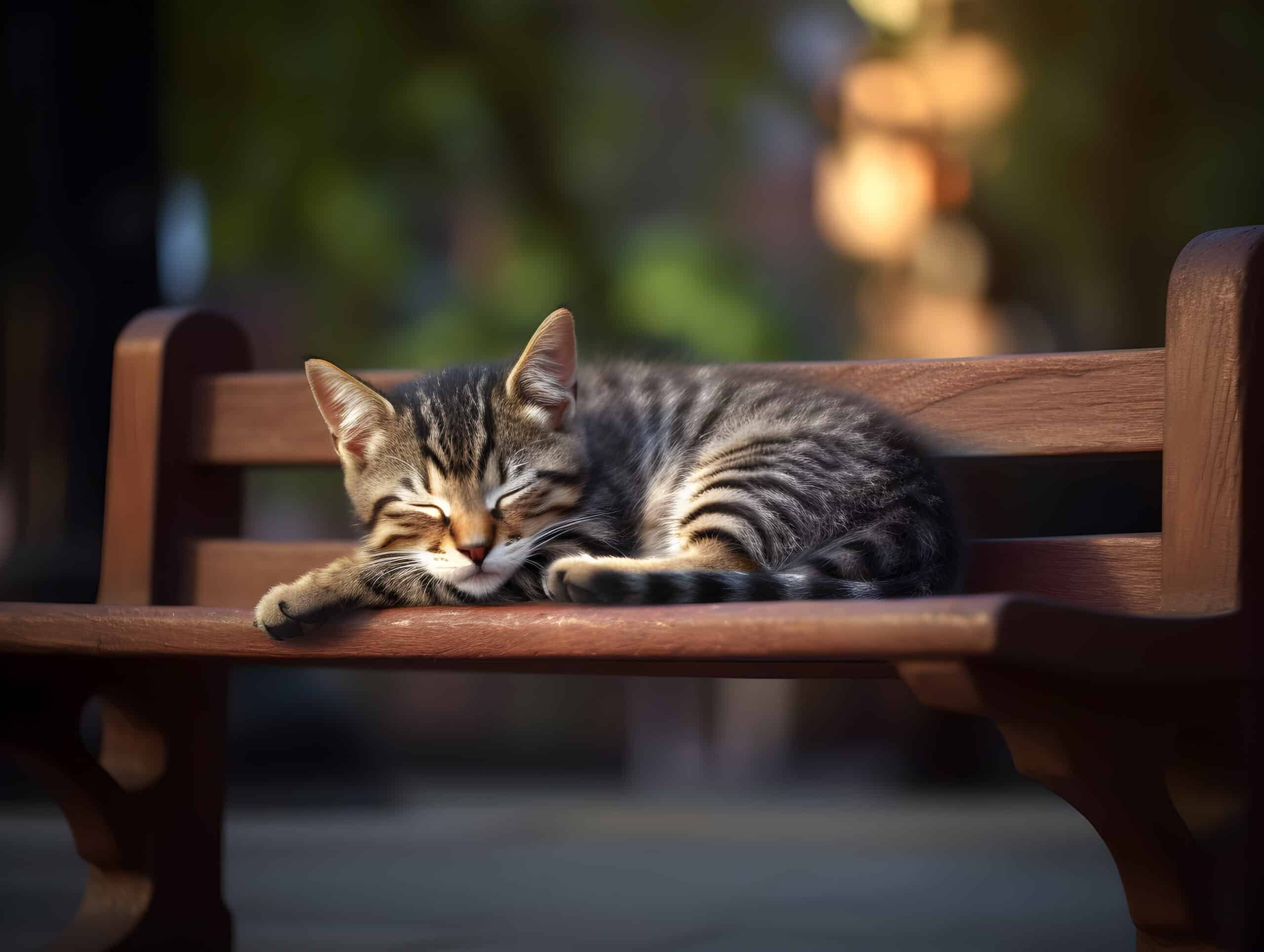How to Keep Cats Off Patio Furniture?
Key Takeaways
- Cat repellent sprays are effective in keeping cats off patio furniture
- Using cat repellent plants can create a natural barrier to keep cats away from outdoor furniture
- Training your cat with consistent verbal commands, negative reinforcement, and positive reinforcement is essential for long-term success in keeping them off the furniture
Many cat owners enjoy allowing their feline friends to spend time outdoors. However, when it comes to outdoor furniture, cats can sometimes cause damage or leave behind unwanted fur and scratches. If you’re wondering how to keep cats off patio furniture, there are several effective methods you can try. In this article, we’ll explore various cat repellent techniques and training strategies that can help you maintain your outdoor furniture in pristine condition.
Using Cat Repellent Sprays
One of the most popular methods to deter cats from patio furniture is by using cat repellent sprays. These sprays come in two types: natural cat repellent and commercial cat repellent. Natural cat repellent sprays are made from ingredients like citrus, lemongrass, coffee grounds, vinegar, lavender, peppermint, eucalyptus, or bananas. Commercial cat repellent sprays are specifically formulated to deter cats and can be found at pet stores or online retailers.
When using cat repellent sprays, it’s important to follow the instructions provided by the manufacturer. Typically, you’ll need to apply the spray directly onto the furniture or the areas where cats are prone to jump or scratch. Repeat the application regularly, especially after rain or if the spray loses its effectiveness.
Utilizing Cat Repellent Plants
Another effective way to keep cats off patio furniture is by using cat repellent plants. Certain plants, such as lavender and lemon thyme, are known to repel cats due to their strong scents. Placing these plants near your outdoor furniture can help create a natural barrier that cats are less likely to cross.
Other Cat Repellent Methods
Aside from sprays and plants, there are additional methods you can employ to discourage cats from getting on your patio furniture:
- Citrus peels: Cats dislike the smell of citrus, so placing citrus peels around the furniture can deter them.
- Double-sided tape: Applying double-sided tape to the furniture can discourage cats from scratching or jumping on it.
- Aluminum foil: Cats typically dislike the texture and sound of aluminum foil, so covering the furniture with it can deter them.
- Pet repellent furniture pads: These pads contain scents that cats find unpleasant, preventing them from approaching the furniture.
- Mothballs: While mothballs have an unpleasant scent, they can be effective in keeping cats away from outdoor furniture.
- Creating a cat-friendly area: Designating a specific area in your yard with cat attractants, such as scratching posts, toys, and comfortable bedding, can redirect their attention away from the furniture.
- Electronic repellents: Motion lights or ultrasonic deterrent devices can be used to startle cats and discourage them from approaching the furniture.
- Training with positive reinforcement: Training your cat to stay off the furniture using positive reinforcement techniques, such as treats and praise, can be effective in modifying their behavior.
- Putting away furniture or cushions: When not in use, storing your outdoor furniture or cushions indoors can prevent cats from accessing them.
- Talking to the cat’s owner: If the cat belongs to a neighbor, politely discussing the issue with the owner may lead to a collaborative solution.
- Using furniture covers: Covering your patio furniture with protective covers can physically block cats from getting on them.
Training Cats to Stay Off Patio Furniture
While the aforementioned methods can help deter cats from patio furniture, training your own cat is an essential aspect of long-term success. Here are some training strategies you can employ:
- Install scratching posts: Provide your cat with appropriate scratching posts away from the furniture to redirect their natural instincts.
- Verbal commands and negative reinforcement: Use consistent verbal commands to tell your cat to stay off the furniture. Pair these commands with negative reinforcement, such as a firm “no” or a harmless spray of water, to discourage them from jumping on the furniture.
- Use furniture protectors: Place furniture protectors, such as plastic or vinyl covers, on the furniture to prevent scratching and damage.
- Sticky tape: Apply sticky tape to the furniture surfaces to discourage cats from jumping or scratching.
- Cover with aluminum foil: Similar to the method mentioned earlier, covering the furniture with aluminum foil can deter cats due to the texture and sound.
- Safe deterrent scents: Spray safe deterrent scents, such as citrus, lemongrass, coffee grounds, vinegar, lavender, peppermint, eucalyptus, or bananas, on the furniture to discourage cats.
It’s important to note that the effectiveness of these training methods may vary depending on your cat’s behavior and preferences. Consistency, patience, and positive reinforcement are key when training your cat to stay off patio furniture.
Conclusion
Keeping cats off patio furniture can be achieved through a combination of cat repellent techniques and training strategies. Using cat repellent sprays, incorporating cat repellent plants, and employing various deterrent methods can help deter cats from accessing your outdoor furniture. Additionally, investing time and effort into training your cat to stay off the furniture is essential for long-term success. Remember to be patient, consistent, and use positive reinforcement when training your cat. By implementing these methods and strategies, you can create a cat-friendly outdoor space while preserving the condition of your patio furniture.
Related Websites:
FAQs:
Q: Why are cats attracted to patio furniture?
Cats are attracted to patio furniture due to its materials and structure. The cushions, fabric, and texture of patio furniture can be appealing to cats. Additionally, the elevated surfaces of patio furniture provide them with a good vantage point and a comfortable place to lounge.
Q: What are the risks of cats using patio furniture?
Cats using patio furniture can cause scratching, shedding, and leave behind fur or marks. This can lead to damage and cleanliness issues. Additionally, if the patio furniture is not cat-friendly, it may not provide adequate support or safety for the cats.
Q: How can I deter cats from accessing patio furniture without causing harm?
There are several non-harmful deterrents you can try. Creating a designated cat-friendly area nearby can provide an alternative space for cats to lounge or play. You can also use scents, textures, and sounds that cats typically dislike to discourage them from approaching patio furniture.
Q: Are physical barriers effective in keeping cats off patio furniture?
Yes, physical barriers can be effective in preventing cats from accessing patio furniture. Netting, fences, or strategically placed objects can be used to block access. Providing cats with alternative elevated surfaces or cat trees can redirect their climbing instincts.
Q: How can I train my cat to stay away from patio furniture?
Training and positive reinforcement can help teach cats to stay away from patio furniture. Rewarding desired behavior and redirecting cats to appropriate areas can be effective techniques. Consistency and patience are key when training cats.






